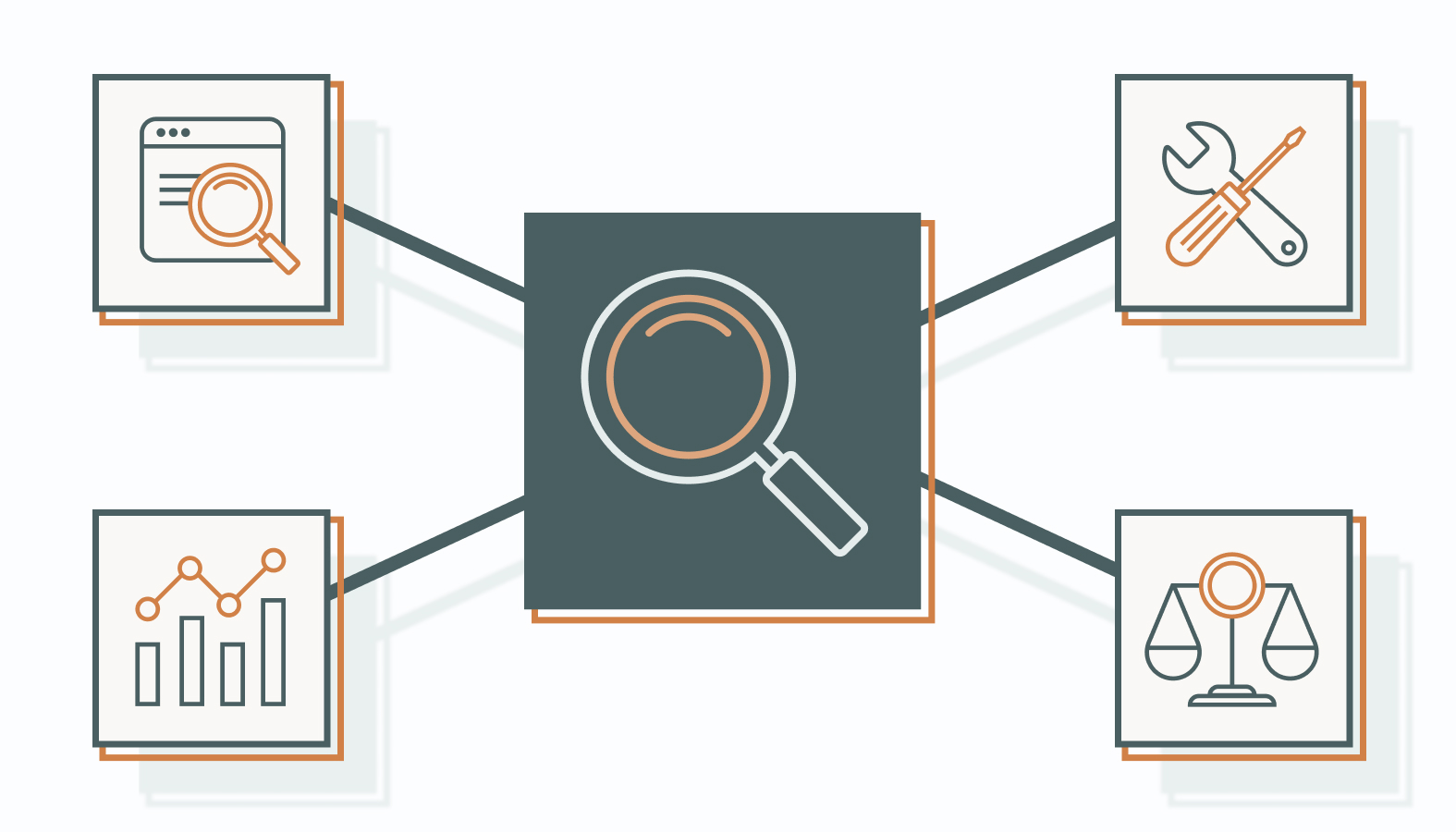Competition online is relentless. Every store is competing for the same attention, and without a clear ecommerce SEO strategy, your products risk being overlooked. The upside? With the right approach, you can cut through the noise and claim the visibility your brand deserves.
The challenge is that SEO isn’t just about ranking higher. It’s about connecting the dots between content, site structure, and technical performance so shoppers not only find you but actually enjoy buying from you. Too many businesses miss that connection, and it costs them both traffic and sales.
This article breaks down how to turn SEO into a real growth engine, helping you attract qualified visitors, guide them through a smooth experience, and convert more of them into customers. Let’s get started.
Unlock Your Ecommerce Potential with SEO
In today’s crowded digital market, visibility isn’t optional… it’s survival.
A smart ecommerce SEO strategy puts your store in front of the right shoppers, improves their experience, and drives sales you can measure.
Why Ecommerce SEO Matters
For ecommerce, visibility is an opportunity. Every search represents intent, and SEO ensures your products appear at the exact moment potential buyers are looking. This timing is what makes SEO such a powerful driver of growth; it connects your store to people who are ready to act.
Search rankings also carry weight beyond the number of clicks. Shoppers often equate higher visibility with greater credibility, which means a strong SEO presence doesn’t just bring more eyes to your products, it builds trust in your brand. That trust can influence buying decisions long before a visitor adds something to their cart.
There’s also a competitive angle. In crowded markets where multiple retailers sell similar products, the brand that shows up first has the advantage. Prioritizing SEO allows you to consistently claim that position, creating a natural barrier against competitors who are slower to adapt.
In short, ecommerce SEO matters because it puts your business where customers already are, reinforces your authority in their eyes, and secures an edge in a highly competitive space.
Key Benefits of Ecommerce SEO
An effective ecommerce SEO strategy isn’t a short-term play. It creates momentum that compounds over time, positioning your store for consistent growth.
Here’s how it pays off:
1) Stronger Market Presence
High rankings don’t just put you in front of buyers. They cement your place as a recognizable option in your category. Over time, this presence builds brand familiarity, making it more likely that shoppers will remember and choose you.
2) Lower Customer Acquisition Costs
Paid ads can drive quick traffic, but costs rise fast. SEO, by contrast, generates a steady flow of qualified visitors without relying on a constant ad spend. This efficiency lowers your acquisition cost per customer and frees up resources to reinvest elsewhere in your business.
3) Sustainable Long-Term Growth
Unlike seasonal campaigns or temporary promotions, SEO continues to deliver results long after the work is done. Optimized content, technical improvements, and backlinks all build equity that continues to drive traffic and conversions over time.
4) Deeper Audience Insights
The data you gather from keyword research, search trends, and on-site behavior goes beyond rankings. These insights can guide product development, inform your content strategy, and even influence broader marketing decisions.
5) Competitive Durability
Competitors can copy your ad strategy or undercut your pricing, but a strong SEO foundation is harder to displace. When you dominate search results, you create a durable advantage that protects your market share.
Unlocking the Secrets of Keyword Research
In ecommerce SEO, keyword research is the foundation of your strategy. Every phrase a customer types into a search bar reveals intent. By mapping those patterns, you gain direct insight into how people shop, what they want, and how they talk about it.
When done well, keyword research enhances visibility and informs product positioning, content strategy, and even how you present value to your audience.
Choosing Keywords That Drive Results
The most effective keywords align with both search intent and your business objectives.
Some will capture broad discovery at the top of the funnel, while others zero in on buyers closer to making a decision.
The real leverage comes from building a portfolio of keywords that work across different stages of the journey — from awareness to consideration and purchase — so you’re always part of the conversation.
Maximize Your Reach with Keyword Tools
Modern research tools turn scattered hunches into a data-driven roadmap.
Platforms like Google Keyword Planner, SEMrush, and Ahrefs give you visibility into demand, competitiveness, and trends.
Look beyond raw volume. Track patterns over time, uncover seasonal swings, and identify rising queries before they peak. This gives your store an edge in creating content and offers that meet demand while competitors are still catching up.
Gain Ground Through Competitor Analysis
Your competitors have already done some of the heavy lifting, whether they realize it or not.
Use tools like SpyFu or Moz to analyze the keywords driving traffic to their sites. By studying what’s working for them, you can spot opportunities they’re neglecting. Sometimes the gap is in how they frame products, other times in niches they haven’t explored.
Reverse-engineering their approach can reveal both low-hanging fruit and strategic openings to differentiate your brand.
Balancing Long-Tail and Short-Tail Keywords
Short-tail terms cast a wide net, often attracting shoppers who are still exploring their options. Long-tail phrases, though smaller in volume, capture buyers who know exactly what they want.
A strong keyword strategy combines both short-tail keywords to increase awareness and long-tail keywords to drive conversions. Think of it as diversifying your portfolio — one brings reach, the other brings precision, and together they fuel predictable growth.
By mastering the art of keyword research, you position your ecommerce business to attract more visitors and connect with those who truly matter: your future customers.
Structuring Your Site for SEO Success
Think of your site structure as the blueprint of your ecommerce growth.
Get it right, and search engines can crawl efficiently while shoppers move through your store without friction. Get it wrong, and you risk burying great products under clutter and confusion.
A clean, intentional framework strengthens both visibility and user engagement.
Building an SEO-Friendly Site
Search engines reward sites that they can interpret quickly. A logical hierarchy and uncluttered structure make indexing seamless, ensuring your products show up when and where they should.
A proper site structure is the groundwork that supports every other SEO initiative you’ll roll out.
Create Impact with a Clear URL Structure
URLs are tiny but mighty signals. Clear, keyword-relevant, and consistent URLs clearly indicate to both search engines and shoppers exactly what to expect.
Examples of URL Best Practices:
- Use hyphens for clean separation (e.g., yourstore.com/men-shoes).
- Avoid symbols, codes, or unnecessary parameters.
- Keep URLs short, readable, and descriptive.
Elevate User Navigation with Breadcrumbs
Breadcrumbs aren’t just old-school design; they’re proven navigational aids that enhance both usability and SEO. They provide shoppers with a clear sense of place while creating structured data that can improve your appearance in search results.
Practical Steps for Implementing Breadcrumbs:
- Ensure breadcrumbs are prominently displayed near the top of the page, typically below the main navigation bar.
- Follow a logical hierarchical structure, starting from the homepage and drilling down to the current page (e.g., Home > Category > Subcategory > Product).
- Utilize breadcrumb schema markup to earn rich snippets in search results and improve visibility.
Optimize Your Navigation for Better Engagement
Navigation isn’t just fancy decoration. A well-designed menu system helps customers find products quickly and encourages them to explore your catalog further.
Strategies for Optimizing Navigation Menus:
- Limit the number of items in the main navigation. Too many options overwhelm instead of guiding.
- Use descriptive, keyword-rich labels for menu items to clearly convey the content.
- Include a search bar to enable users to find specific products or information quickly.
- Ensure your navigation is mobile-friendly, featuring a responsive design that adjusts to various screen sizes and resolutions.
When your architecture is clear, URLs intentional, and navigation intuitive, you create a system that scales with you. Search engines reward it, shoppers appreciate it, and conversions follow naturally.
Elevating Your On-Page SEO
On-page SEO is where strategy meets execution. Each product page, each image, and each technical detail is an opportunity to signal relevance, improve rankings, and persuade buyers to take action. Done well, it creates a frictionless experience that satisfies both algorithms and humans, bringing you visibility and conversions.
Product Page Optimization
A product page isn’t just a digital shelf; it’s a salesperson working 24/7. Optimizing these pages ensures they appear in search results while giving shoppers every reason to click ‘Add to Cart’.
Craft Product Descriptions That Sell Themselves
A product description should do more than fill space. It should boost visibility and move buyers closer to checkout.
The best ones strike the balance: they’re search-friendly without sounding robotic, and persuasive without feeling pushy.
Techniques for Writing Product Descriptions That Drive Sales:
- Lead with clarity by highlighting the product’s key benefits in just a few seconds.
- Use clear, concise language that makes features easy to scan.
- Weave in keywords naturally so they’re invisible to the reader but visible to search engines.
- Address pain points directly: What problem does it solve? What benefit does it unlock?
- Close with a compelling call-to-action so the next step is obvious.
Enhance Images with Alt Text for Better SEO
Search engines don’t process images like we do. They rely on alt text to understand content, and so do screen readers for users with visual impairments.
When done correctly, alt text enhances both accessibility and image search visibility.
Guidelines for Crafting Effective Alt Text:
- Describe the image content clearly and concisely.
- Work in relevant keywords naturally, without stuffing.
- Skip filler phrases like “image of” or “picture of”— search engines already know.
Boost Visibility with Schema Markup
Structured data is how you help search engines connect the dots. Product schema, in particular, makes your listings stand out with pricing, ratings, and availability baked right into search results.
Here’s how to implement this:
- Generate schema with trusted tools (e.g., Google’s Markup Helper).
- Apply directly to the product page HTML.
- Validate implementation with Google’s Rich Results Test.
Technical SEO: The Backbone of Your Strategy
Even the sharpest content loses its power if the site itself is sluggish. Technical SEO keeps performance tight, ensuring every click leads to a fast, secure, mobile-ready experience.
Accelerate Your Site Speed
Shoppers won’t wait, and neither will search engines. A site that takes more than a few seconds to load bleeds traffic, rankings, and conversions.
Speed is a competitive advantage. Faster sites keep visitors engaged, improve mobile performance, and send the right signals to Google’s algorithm.
How to Boost Site Performance:
- Compress and optimize images to ensure they load quickly without compromising image quality or clarity.
- Minimize HTTP requests and streamline code to cut unnecessary delays.
- Leverage browser caching so repeat visitors don’t reload the same assets.
- Use a CDN (Content Delivery Network) to deliver content closer to your audience, wherever they are.
- Monitor your site regularly with tools like Google PageSpeed Insights or GTmetrix to catch bottlenecks before they impact conversions.
A faster site doesn’t just rank better, it sells better.
Ensure Mobile Optimization
Most shoppers start (and finish) their buying journey on mobile. If your site doesn’t feel effortless on a four-inch screen, you’re losing sales before they even begin. A seamless mobile experience is table stakes for both conversions and rankings.
Strategies for a Mobile-First Site:
- Utilize a responsive design that adapts seamlessly across various devices.
- Simplify menus and avoid pop-ups that block your browsing experience.
- Test regularly with tools like Google’s Mobile-Friendly Test.
Secure Your Site with HTTPS
Security is just as critical. HTTPS not only protects user data but also signals trust to both shoppers and search engines. Without it, you risk credibility and visibility.
Steps for Migrating to HTTPS:
- Secure an SSL certificate from a trusted certificate authority (CA).
- Update your site to run on HTTPS across the entire site.
- Fix internal links and set up 301 redirects from HTTP to HTTPS to preserve rankings.
By fine-tuning on-page elements and reinforcing them with strong technical execution, you transform your ecommerce site from just another storefront into a high-performing growth channel. The result: greater visibility, stronger trust, and consistently delivered sales.
Crafting a Winning Content Strategy
Content is the engine that pulls shoppers into your orbit and keeps them engaged long enough to make a purchase.
A strong content strategy doesn’t just fill pages. It builds authority, drives discovery, and encourages visitors to take action. Done right, it turns your store into a destination customers keep coming back to.
1) Blog with Purpose
A blog is a growth tool. Thoughtful, SEO-backed articles can expand your reach, answer buyer questions, and showcase your expertise.
Tips for blog content that performs:
- Zero in on topics tied directly to your audience’s interests and pain points.
- Align each post with targeted keywords to capture search demand.
- Break up text with visuals, charts, or quick explainer clips to keep readers engaged.
2) Use Video to Educate and Inspire
Video earns attention fast. From quick product demos to how-to tutorials, it’s a format that blends storytelling with proof. Beyond building trust, video increases the likelihood that shoppers will stay, engage, and make a purchase.
Keys to effective video content:
- Keep production clean but concise. Value trumps length.
- Match topics to real customer needs and common questions.
- Always close with a clear next step, whether that’s learning more or making a purchase.
3) Tap into User-Generated Content
Few things persuade like seeing real people use and love your products. UGC builds authenticity that no brand copy can replicate, while also fueling word-of-mouth momentum.
Ways to amplify UGC:
- Launch hashtag campaigns or contests that encourage customers to submit their content.
- Showcase authentic reviews, photos, and testimonials directly on product pages.
- Engage with contributors. Reshare, thank them, and spotlight their stories.
A winning content strategy mixes authority-driven blogs, compelling video, and authentic UGC. Together, they provide your e-commerce store with three key growth levers: increased visibility, enhanced trust, and content that attracts clicks and drives conversions.
Build a Robust Backlink Profile That Commands Authority
Search engines view backlinks as a form of vote of confidence. The more high-quality endorsements your site earns, the more weight it carries in rankings and in your customers’ eyes.
A deliberate backlink strategy enhances visibility, strengthens your brand’s credibility, and expands your reach into new audiences.
Proven Strategies for Backlink Acquisition
Acquiring high-quality backlinks requires strategic effort and creativity.
By focusing on the right strategies, you can build a network of links that boosts your site’s authority and drives traffic.
1) Guest Posting That Opens Doors
Publishing content on respected industry sites gets your name in front of engaged readers while securing powerful backlinks. It’s visibility, authority, and SEO momentum in one move.
Tips for Identifying and Securing Guest Posting Opportunities:
- Target outlets with strong domain authority and loyal readership.
- Craft personalized pitches that highlight your expertise and the value you can provide to their readers.
- Ensure your guest content informs, inspires, and matches the tone of the host site.
2) Leverage Influencer Reach
Influencers are more than promotion partners. They’re link magnets. A well-placed collaboration introduces your brand to new audiences and drives links from trusted sources.
To select the right influencers, remember to:
- Choose influencers whose audience matches your buyers, not just their follower count.
- Measure engagement and authenticity, not vanity metrics.
- Co-create content that feels natural to both your brand and theirs—reviews, tutorials, or behind-the-scenes features.
3) Forge Partnerships to Strengthen Your SEO
Collaborations with complementary businesses can spark backlink opportunities that competitors can’t easily replicate.
- Look for partners whose offerings align with yours without overlapping.
- Explore joint content campaigns, webinars, or bundled promotions that provide value on both sides.
- Nurture genuine relationships through networking and community engagement before making a connection request.
The payoff: a strong backlink profile signals authority to search engines and trust to shoppers. Over time, these links compound into a durable advantage that fuels rankings, builds brand equity, and opens the door to long-term growth.
Compliance and Security: Protecting Growth While Building Trust
Ecommerce growth doesn’t just hinge on visibility and conversions. It depends on protecting customers and staying compliant with regulations.
Security and compliance aren’t background tasks; they’re pillars of credibility. Get them right, and you earn trust that competitors can’t fake.
Data Compliance That Keeps You Future-Proof
Global regulations, such as the GDPR (General Data Protection Regulation), demand transparency and respect for user privacy. Meeting these standards safeguards your brand while strengthening your reputation.
Steps to align with GDPR and similar frameworks:
- Audit your data collection to know exactly what you store and why.
- Update your privacy policy to ensure it’s clear, accessible, and easy to act upon.
- Secure explicit consent before capturing personal data.
- Give customers control: options to view, update, or delete their data.
Security as a Competitive Advantage
Every transaction is built on trust. A breach can cost more than fines. It can erode years of brand equity in a single headline.
Best practices for a secure foundation:
- Encrypt sensitive data both at rest and in transit.
- Keep systems updated and patched to close vulnerabilities.
- Enforce strong authentication policies, including two-factor logins.
- Train your team regularly. An informed team is your first line of defense against security threats.
SEO and Compliance Go Hand in Hand
Search performance and compliance aren’t separate goals. The same clarity and transparency that regulations demand also strengthen SEO.
Practical alignment tactics:
- Use plain, accessible language when explaining data collection.
- Keep intrusive pop-ups or dark patterns out of the user journey.
- Review your SEO approach regularly to ensure it evolves in line with the changing legal landscape.
Compliance and security set the stage for sustainable growth. Customers reward brands that protect them, and search engines amplify businesses that play by the rules. Together, that’s a foundation you can scale with confidence.
SEO as Your Growth Engine
In ecommerce, visibility is an opportunity. A strategic SEO framework doesn’t just earn clicks; it connects you with the right buyers, builds trust, and creates momentum that compounds over time.
From keyword intelligence to technical execution, from content strategy to compliance, every piece works together to elevate your store above the competition.
- Keywords that connect: Target the terms your customers actually search for.
- Smart site structure: Create intuitive navigation and optimize on-page elements for a seamless user experience.
- Content with purpose: Create valuable, engaging content that builds authority.
- Quality backlinks: Earn links from trusted sources to strengthen domain authority.
- Security and compliance: Protect customer data and signal credibility with HTTPS and regulatory alignment.
Brands that embrace this approach unlock measurable results: stronger rankings, higher conversions, and a durable market advantage.
The path forward is clear. Invest in SEO as the backbone of your ecommerce strategy, and you’ll be equipped to adapt, compete, and scale with confidence.
Let’s Build Your SEO Advantage
SEO doesn’t reward hesitation; it rewards action. The earlier you put the right strategy in place, the faster you pull ahead of competitors.
If you’re ready to see how these tactics translate into growth for your store, our team is here to help. No jargon, no fluff — just clear guidance and strategies tailored to your business.
Schedule a candid conversation with one of our SEO experts ». Let’s map out an SEO plan that gives your ecommerce brand the visibility, credibility, and conversions it deserves.












